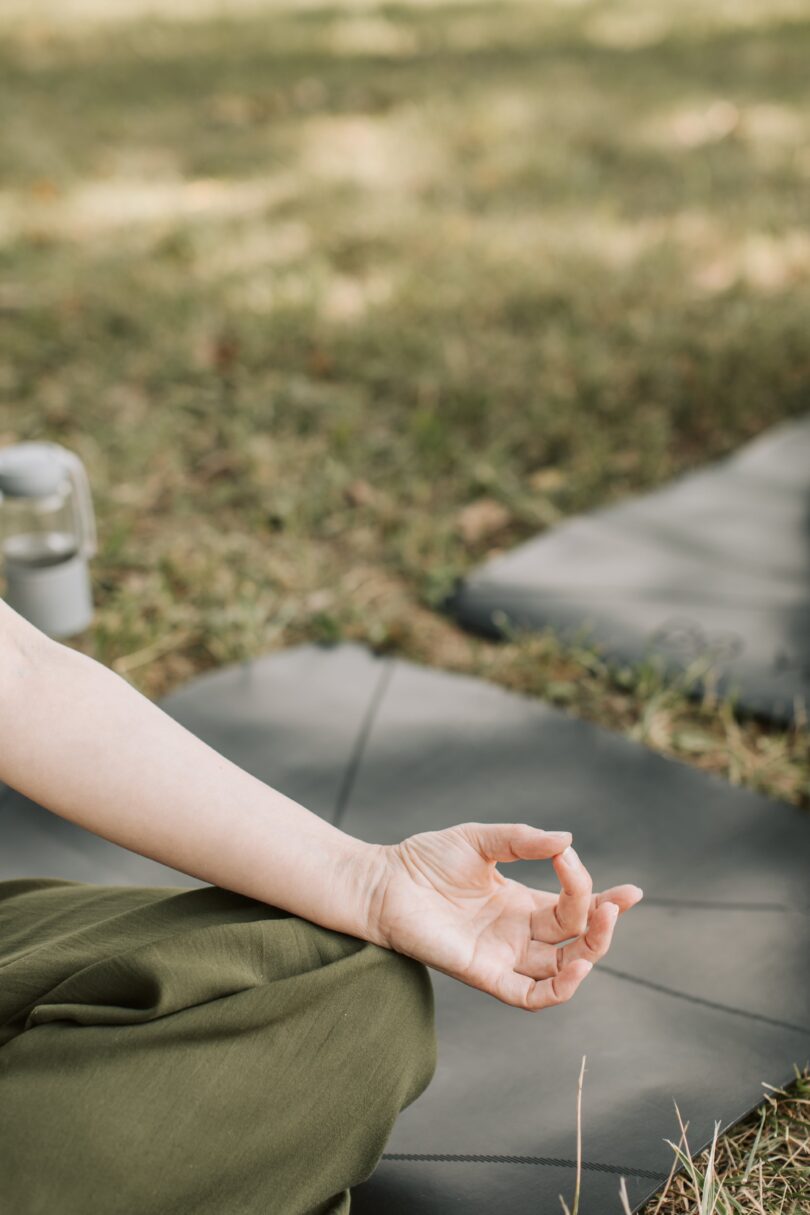Table of Contents
Introduction
In a world that constantly emphasizes the importance of physical activity, it’s essential to find exercise routines that cater to diverse needs. For elderly beginners looking to enhance their well-being, chair yoga emerges as a gentle yet effective option. Let’s delve into the world of chair yoga, exploring its benefits, practical aspects, and personal stories that highlight its transformative power.
Benefits of Chair Yoga for Elderly Beginners
Chair yoga serves as an accessible form of exercise for seniors, offering numerous benefits that contribute to overall health. The practice involves gentle movements and stretches, making it suitable for individuals with varying levels of mobility. Let’s explore some of the key advantages:
- Gentle Physical Exercise Chair yoga provides a low-impact workout, promoting cardiovascular health without putting excessive strain on joints. The seated poses allow participants to engage in physical activity comfortably.
- Improved Flexibility The gradual stretches and movements involved in chair yoga enhance flexibility, vital for maintaining a full range of motion. This is particularly beneficial for seniors who may experience stiffness in their muscles and joints.
- Stress Relief The meditative aspect of chair yoga contributes to stress reduction. Focused breathing and mindfulness during the practice help calm the mind, providing a sense of relaxation and mental well-being.
- Enhanced Breathing Chair yoga incorporates breathing exercises that improve respiratory function. Deep, controlled breathing not only enhances lung capacity but also promotes a sense of tranquility.
Getting Started with Chair Yoga
Before diving into chair yoga, it’s crucial to set the stage for a safe and enjoyable practice. Here’s how beginners can start their journey:
A. Selecting the Right Chair Choosing a stable and comfortable chair is fundamental for a successful chair yoga practice. Armless chairs with a straight back are preferable to allow for a full range of movement.
B. Basic Chair Yoga Poses
- Neck Stretches Gently tilt the head from side to side, promoting flexibility in the neck and shoulders.
- Seated Forward Bend Fold forward from the hips while seated, stretching the spine and hamstrings.
- Ankle Rolls Lift the feet off the ground and rotate the ankles clockwise and then counterclockwise.
- Seated Cat-Cow Stretch Mimic the traditional cat-cow stretch by arching and rounding the spine while seated.
Safety Considerations
While chair yoga is generally safe for most individuals, it’s essential to consider individual health conditions and limitations:
A. Consulting with a Healthcare Professional Before starting chair yoga or any exercise regimen, it’s advisable for seniors to consult with their healthcare provider. This ensures that the practice aligns with their individual health needs.
B. Understanding Physical Limitations Participants should be mindful of their bodies and avoid pushing themselves beyond their comfort zones. Modifying poses or using props can make the practice more accessible.
Related Article : Article on “Teaching Yoga to Seniors”
Incorporating Chair Yoga into Daily Routine
To reap the full benefits of chair yoga, consistency is key. Establishing a regular schedule and following these tips can help make chair yoga a sustainable part of daily life:
A. Establishing a Regular Schedule Set aside specific times during the day for chair yoga, making it a regular part of the routine. This consistency enhances the likelihood of forming a habit.
B. Tips for Consistency
- Start with short sessions and gradually increase the duration.
- Find a comfortable and quiet space for practice.
- Use positive affirmations to motivate yourself.
Testimonials and Success Stories
Real-life experiences highlight the positive impact of chair yoga on well-being. Let’s explore some testimonials from individuals who have embraced chair yoga:
A. Real-life Experiences “Chair yoga has been a game-changer for me. As a senior with arthritis, the gentle stretches have significantly reduced my joint pain, and I feel more energized.”
- Jane, 72
B. Positive Impacts on Well-being “The combination of physical exercise and mindfulness in chair yoga has not only improved my flexibility but also brought a sense of peace to my daily life. I look forward to each session.”
- Richard, 68
Adapting Chair Yoga for Various Mobility Levels
Chair yoga is inclusive and can be adapted for individuals with different mobility levels. Customizing poses and approaches ensures that everyone can benefit:
A. Customizing Poses for Different Abilities Instructors and participants can modify poses to suit individual needs, making chair yoga accessible for those with limited mobility.
B. Inclusive Approaches Encouraging a supportive and inclusive environment in chair yoga classes fosters a sense of community. Everyone, regardless of their mobility level, can enjoy the practice.
Chair Yoga Accessories
Enhance the chair yoga experience with supportive accessories that add comfort and stability:
A. Supportive Cushions Placing cushions strategically on the chair can provide additional support during seated poses, promoting comfort and proper alignment.
B. Modified Props for Comfort Using props like resistance bands or small weights can add variety to chair yoga routines, targeting different muscle groups.
Mental Health Benefits
Chair yoga extends beyond physical exercise, offering mental health benefits through mindfulness and meditation:
A. Mindfulness and Meditation Incorporating mindfulness techniques and brief meditation sessions during chair yoga promotes mental clarity and emotional well-being.
B. Connection Between Body and Mind The mind-body connection established in chair yoga contributes to a holistic sense of wellness. Participants often report feeling more centered and present.
Popular Chair Yoga Classes and Resources
For those eager to explore chair yoga further, there are various resources available, both online and in local communities:
A. Online Video Tutorials Numerous online platforms offer chair yoga tutorials catering to different levels. These videos guide participants through poses and sequences in the comfort of their homes.
B. Community-based Classes Local community centers or senior centers often host chair yoga classes, providing a social and supportive setting for participants.
Personal Stories of Transformation
Chair yoga has the power to transform lives, as evidenced by personal stories of overcoming challenges and building a sense of community:
A. Overcoming Challenges Through Chair Yoga Individuals with physical limitations or health conditions find empowerment and improved well-being through consistent chair yoga practice.
B. Building a Sense of Community Chair yoga classes create a supportive community where participants share their journeys, fostering a sense of camaraderie and mutual encouragement.
Tips for Instructors
For those teaching chair yoga, effective strategies can enhance the experience for participants:
A. Effective Teaching Strategies Instructors should provide clear instructions and offer modifications for different abilities, ensuring an inclusive and engaging class.
B. Encouraging Active Participation Foster a positive and encouraging atmosphere, motivating participants to actively engage in chair yoga poses and exercises.
Frequently Asked Questions (FAQs)
A. Can chair yoga be practiced by anyone?
Chair yoga is designed to be inclusive and can generally be practiced by individuals of all ages and fitness levels.
B. Are there age restrictions for chair yoga?
Chair yoga is particularly suitable for seniors, but there are no strict age restrictions. Anyone looking for a gentle form of exercise can benefit.
C. How long should a chair yoga session last?
A chair yoga session can range from 15 to 45 minutes, depending on individual preferences and time constraints.
D. What are some common misconceptions about chair yoga?
One common misconception is that chair yoga is only for those with limited mobility. In reality, it can benefit individuals of all fitness levels.
E. Is chair yoga a suitable alternative for traditional yoga?
Chair yoga complements traditional yoga and can be an excellent alternative for those who may find floor-based poses challenging.
Conclusion
In conclusion, chair yoga for elderly beginners offers a holistic approach to physical and mental well-being. Its gentle nature, combined with adaptability, makes it an ideal choice for seniors looking to incorporate exercise into their lives. As we’ve explored the benefits, practical aspects, and personal stories associated with chair yoga, it’s clear that this practice has the potential to positively impact the lives of many.
Related Article : Article on “Teaching Yoga to Seniors”







